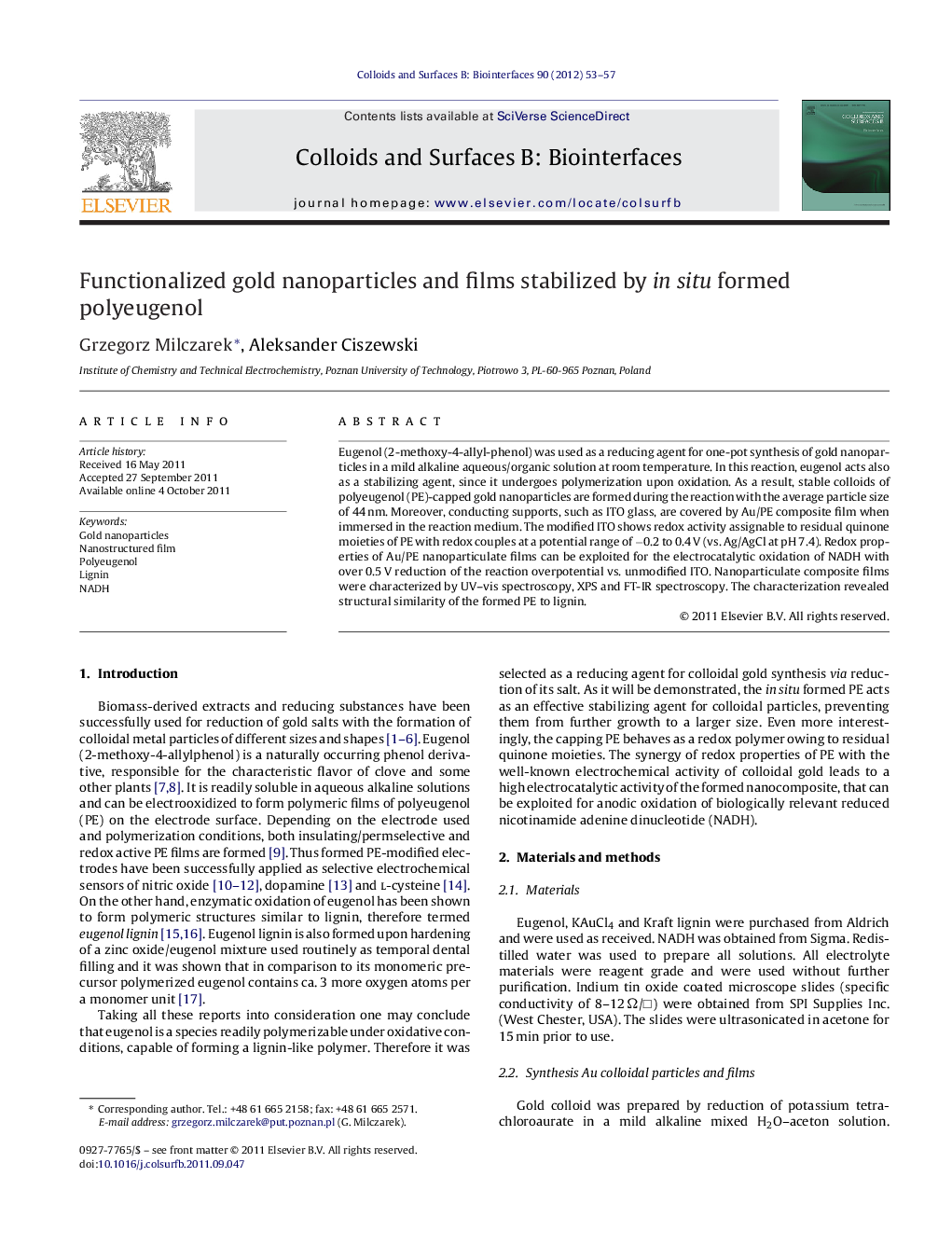| Article ID | Journal | Published Year | Pages | File Type |
|---|---|---|---|---|
| 600925 | Colloids and Surfaces B: Biointerfaces | 2012 | 5 Pages |
Eugenol (2-methoxy-4-allyl-phenol) was used as a reducing agent for one-pot synthesis of gold nanoparticles in a mild alkaline aqueous/organic solution at room temperature. In this reaction, eugenol acts also as a stabilizing agent, since it undergoes polymerization upon oxidation. As a result, stable colloids of polyeugenol (PE)-capped gold nanoparticles are formed during the reaction with the average particle size of 44 nm. Moreover, conducting supports, such as ITO glass, are covered by Au/PE composite film when immersed in the reaction medium. The modified ITO shows redox activity assignable to residual quinone moieties of PE with redox couples at a potential range of −0.2 to 0.4 V (vs. Ag/AgCl at pH 7.4). Redox properties of Au/PE nanoparticulate films can be exploited for the electrocatalytic oxidation of NADH with over 0.5 V reduction of the reaction overpotential vs. unmodified ITO. Nanoparticulate composite films were characterized by UV–vis spectroscopy, XPS and FT-IR spectroscopy. The characterization revealed structural similarity of the formed PE to lignin.
Graphical abstractFigure optionsDownload full-size imageDownload as PowerPoint slideHighlights► Reaction between gold ions and eugenol is shown to produce gold nanoparticles. ► Along with nanoparticles a polymer is formed serving as a stabilizing agent. ► The polymer formed is redox and therefore electrochemically active. ► During the reaction a nanocomposite film is formed on the immersed substrates. ► The film show excellent electrochemical activity toward the oxidation of NADH.
